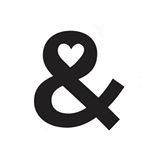AUSTIN, Texas–Austin-based SalesVu just released its latest mobile payment and point-of-sale application, SalesVu 2.2 for iPhones and iPads. This new update is intended to replace costly server-based POS solutions with a more affordable and reliable option.
Traditional Windows touch screen POS solutions found at many retail stores and restaurants today usually cost tens of thousands per terminal. Pascal Nicolas, founder and CEO of SalesVu, notes the high cost is partly due to the more expensive hardware required to run the POS, which includes not just the terminals and separate monitors but also on-site servers. The SalesVu iPad POS application is free, and iPad tablets are considerably more affordable than the costly traditional infrastructure required to run POS applications,” he says. “SalesVu does not charge monthly subscription or technical support fees, which means paying for a traditional full-functioning POS is no longer a requirement for small or enterprise businesses.”
SalesVu is leading a new generation of mobile POS systems that are transforming the restaurant, retail and service industries. By severing the cord to hardware-intensive technology and moving the infrastructure to the cloud, SalesVu 2.2 has brought much of the traditional POS functionality to the iPhone and iPad market as a free application easily downloaded and up in running in less than an hour. As a business grows, new terminals or locations can be added easily by downloading SalesVu from the App Store – all the products and inventory will automatically appear on the device from the business’ cloud account – removing the traditional time consuming setup process. A demo of SalesVu 2.2 can be seen here: www.salesvu.com/blog/salesvu-2-2-demo
The latest 2.2 release includes a revolutionary feature enabling cross-device-sync functionality which allows multiple iPads, iPhones or iPod Touch devices to communicate with one another within a single store location. Until now, this functionality has only been available in expensive networked solutions. “A fully featured server-based bar POS solution with eight terminals would have cost us over $100K plus annual maintenance fees, but we got the same benefits from SalesVu for less than $5K,” says Joan Castillo, owner of The Stardust Club in Austin, TX.
Another bar operator, Mike Halker, founder of the Due South Brewing bar in Boynton Beach, Florida, says, “We love the fact that we can open a tab from one iPad, edit it on another, and collect payment on a third. We also save on printer costs because all the iPads can print to the same receipt, kitchen, or bar printers – and intelligently know what to print to each one. There are other iPad applications such as Square, but they operate more as a simple cash register rather than a true point-of-sale solution. SalesVu allows us to manage and close multiple shifts per day, adjust tips at the end of each shift, have different employees and bartenders ring-up tickets under separate logins, and even split checks for large parties. The fact that SalesVu does all the work of a traditional POS and is available for free is a god-send for a business owner.”
SalesVu 2.2 also adds several features such as the ability to enter decimal / fractional product quantities. This allows businesses that sell by the pound to have a cost effective iPad system. Jun Alejo, owner Zweet Station in Los Angeles, CA, sells candy by the pound and has to say, “We love the fact that SalesVu now allows us to sell by the pound by entering a decimal quantity amount! We looked at various other free iPad POS solutions on the market and it is the only one that allows us to do that, while also providing all the features of the more expensive solutions.”
Another advantage provided by the SalesVu 2.2 release caters to large scale, multi-location businesses, allowing them to manage multiple stores and remote employees in real time from the cloud. “We love the fact that we can sit in our office in Dallas and see what products are selling at each store in real time,” says Henry Tjham, IT Director of a Dallas-based franchisor of quick-serve restaurants. “With SalesVu, our franchisees get a complete POS for just the price of an iPad and none of the technical issues that we had with other POS systems. The best part is that the corporate office is able to see all the sales analytics in real time from SalesVu.com. We can even change prices right from our office, add new products, and view inventory levels. We also looked a Square and other solutions but there is simply no comparison in overall functionality and ability to control our operations.”
SalesVu has partnered with Mercury Payment Systems to offer a free credit card reader to businesses who chose to accept credit cards in addition to cash. SalesVu has negotiated a low, flat rate of 2.7% for its customers for both swiped and manually entered credit card transactions in the US, which is lower than the rate charged by other competitors.


